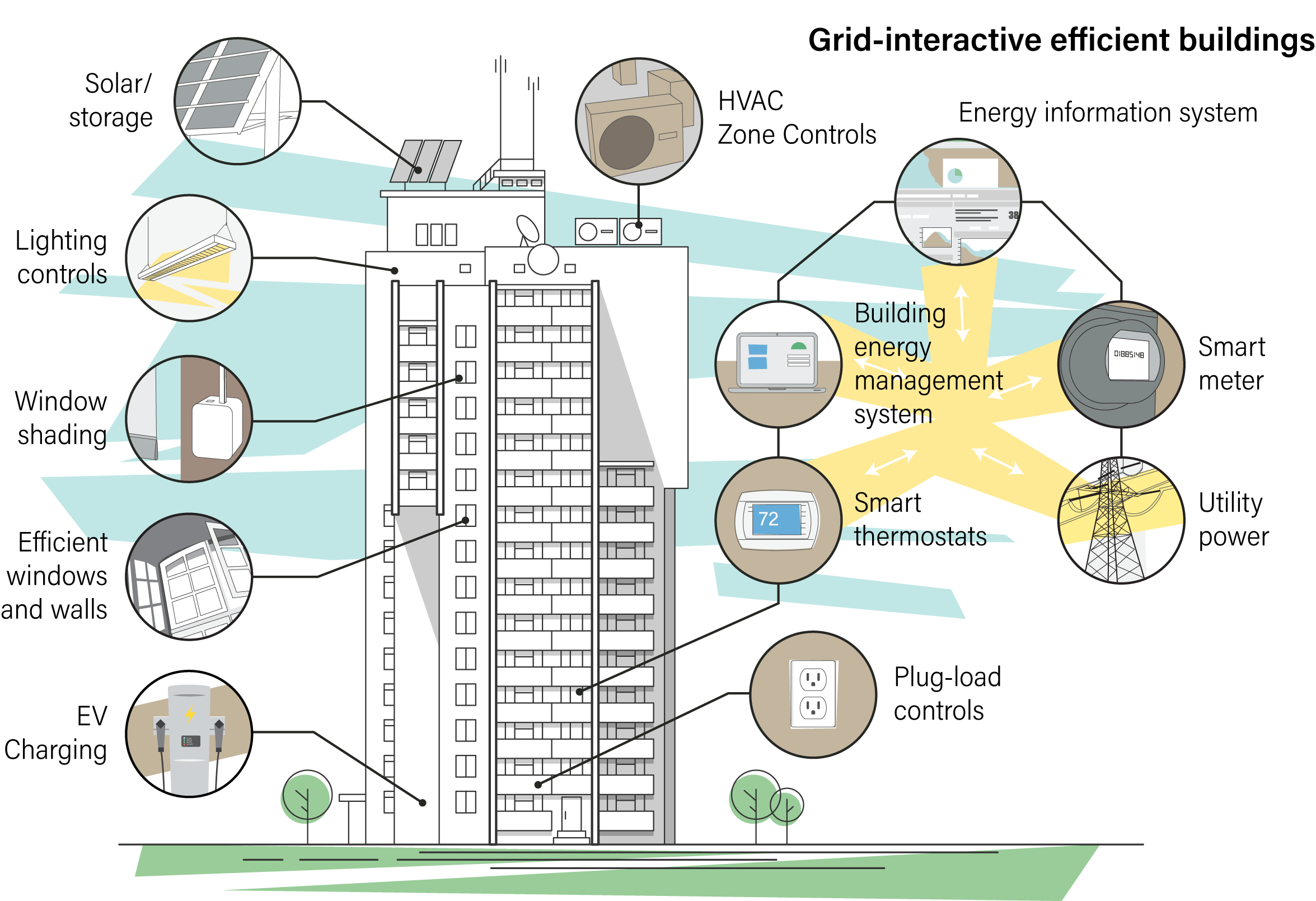More utilities across the United States are adopting programs to promote grid-interactive efficient buildings (GEBs), which will be critical to the grid of the future. Some programs focus on energy savings and others on demand flexibility, but none of those surveyed reap the benefits of fully integrating both, according to ACEEE research released today.
These buildings, also called “smart buildings,” are increasingly important. They can help utilities adapt to rapid changes in the grid, including the adoption of technologies like electric vehicles and heat pumps, as well as new policy directions like beneficial electrification. They deliver substantial energy and emission reductions by using highly efficient materials and equipment. They can also act as resources to the grid, by using less overall energy than a normal building and strategically shifting or reducing energy consumption during peak times.
Utilities and program administrators would benefit greatly from creating programs that accurately value both energy efficiency and grid flexibility benefits. Instead, these programs remain segregated with separate goals and objectives.
Utilities are expanding programs to make buildings efficient and grid interactive. The plot below shows a range of program types. The lower end of the scale (representing less complexity and integration) includes programs like automated demand response (ADR) that send a signal to equipment in a building to reduce its load. These programs, such as Duke Energy’s EnergyWise program and Austin Energy’s Load Co-op pilot, do a great job of providing grid benefits, but do not include energy efficiency.
Moving up the scale, other ADR programs also promote energy efficiency by offering additional incentives for efficiency measures, such as PG&E’s ADR program and Dominion’s Smart Thermostat program.
Other program types use different methods to integrate energy efficiency and grid benefits; however, none are fully integrated in what we consider a “GEB program,” at the upper end of the scale.
Integration faces barriers
One of the biggest barriers to these fully integrated programs is determining the fair, accurate value of energy efficiency and grid benefits. As an example, efficiency programs typically incentivize products and technologies that reduce overall energy consumption, while demand response programs may prefer technologies that have greater capacity to store or shift the load when needed, though they might use more energy.
Other barriers include a lack of interoperability standards for commercial building energy management and information systems to communicate with the grid, “siloed” organizational structures that don’t promote coordination between energy efficiency and grid flexibility departments, and lack of policy support for grid-interactive efficient buildings.
To address these barriers, we recommend utilities and program administrators work toward full-fledged GEB programs. They can lay a foundation now by:
- Piloting new programs, with smart and connected equipment
- Combining energy efficiency and demand response teams
- Upgrading their IT department and energy management systems
- Subsidizing services, not just technologies
- Tracking ongoing research and policies that enable GEBs
Promising steps ahead
Although utility programs do not currently promote grid services and energy efficiency equally, there are reasons to be optimistic. California has developed policies to help promote grid-interactive efficient buildings. New York University is currently researching interoperability for energy management and information systems. New Buildings Institute (NBI) is collaborating with utilities to develop a framework to value grid services. Utilities, including Southern Company and Sacramento Municipal Utility District (SMUD), are conducting pilots (mostly residential, for now) that aggregate different demand energy resources to help improve demand flexibility.
We will need all these initiatives and more to help us reduce energy consumption and carbon emissions, as well as adapt to the rapidly changing grid.





